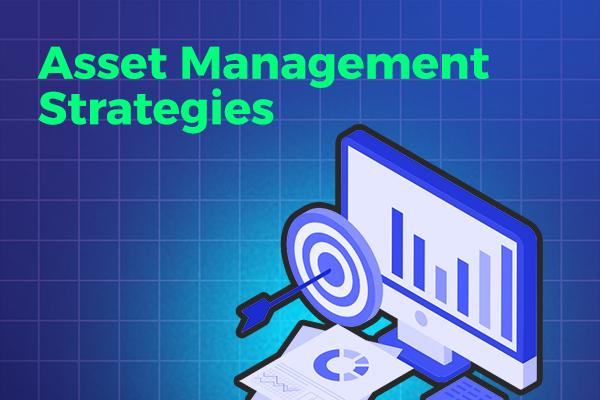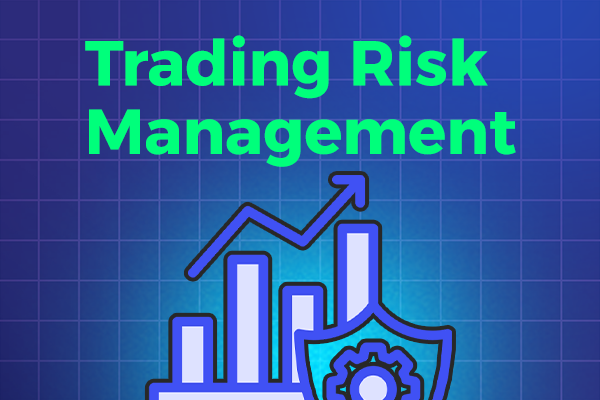If you want to achieve financial success, managing your assets is crucial. Asset management involves making informed decisions about managing your investments, including stocks, bonds, real estate, and other assets.
Effective asset management strategies help you maximize your returns, minimize risk, and achieve your financial goals. In this article, we will explore different asset management strategies that you can use to improve your financial prospects.
Key Takeaways:
- Asset management is vital for achieving financial success.
- Asset management involves making informed decisions about managing your investments.
- Effective asset management strategies help maximize returns, minimize risk, and achieve financial goals.
Types of Asset Management Strategies
Effective asset management involves the strategic allocation of resources to achieve financial goals. There are various types of asset management strategies available to investors, each with its unique features and benefits. Below are the three main types of asset management strategies:
Active Asset Management Strategies
Active asset management involves making investment decisions based on market analysis and research. The goal of active management is to outperform the market and generate higher returns. Active management strategies include market timing, stock picking, and sector rotation. Market timing entails buying and selling assets based on anticipated market trends, while stock picking involves selecting individual stocks based on their potential for growth. Sector rotation involves shifting resources between different sectors based on their perceived performance.
Active asset management strategies require a high level of expertise and knowledge, and investors often incur higher fees and expenses compared to passive management.
Passive Asset Management Strategies
Passive asset management aims to replicate market returns by maintaining a diversified portfolio. The goal is to minimize risk and achieve long-term growth by holding a mix of assets such as stocks, bonds and commodities. Passive management strategies include investing in index funds, ETFs, and using a buy-and-hold approach. Index funds and ETFs track market indexes and replicate their performance, while a buy-and-hold approach involves purchasing and holding assets for an extended period of time.
Passive asset management is a cost-effective and low-maintenance strategy, making it an ideal option for novice investors. It also offers more stability in the long term and is less impacted by short-term market volatility.
Risk Management Strategies
Risk management strategies aim to mitigate potential losses resulting from market volatility. Techniques include asset allocation, hedging, and diversification. Asset allocation involves distributing assets across different categories such as stocks, bonds, and commodities, to minimize risk. Hedging involves using derivative contracts to offset potential losses from fluctuations in the market. Diversification involves holding a range of assets to minimize risk and maximize returns.
Risk management strategies are critical for investors of all levels, and they play a crucial role in maintaining a stable portfolio. They help to reduce the impact of market fluctuations and ensure that the investor is protected from significant losses.
Active Asset Management Strategies
Active asset management involves making investment decisions with the goal of maximizing returns. It requires extensive research, analysis, and market knowledge to outperform the market and achieve higher returns.
One active asset management strategy is market timing, which involves predicting market trends and making investment decisions accordingly. However, market timing can be risky as it relies heavily on accurate predictions.
Another strategy is stock picking, which involves selecting individual stocks based on factors such as financial performance, management team, and industry trends. This requires rigorous research and analysis but can result in higher returns compared to passive investing.
Sector rotation is a third strategy, which involves shifting investments between different sectors of the market based on economic trends and cycles. This can help to maximize returns by capitalizing on sector-specific opportunities.
Active asset management strategies can be effective in achieving higher returns, but they also come with higher risk and require significant time and effort. It is important to carefully evaluate your risk tolerance and financial goals before implementing an active asset management strategy.
Passive Asset Management Strategies
Passive asset management strategies involve maintaining a diversified portfolio with the goal of matching market returns. Such strategies do not aim to outperform the market, but rather to achieve market returns without making frequent trades or incurring high fees.
One popular passive investment strategy is investing in index funds, which are mutual funds or exchange-traded funds designed to track a specific market index, such as the S&P 500. Index funds offer low fees and diversification across a broad range of stocks, making them an attractive option for investors seeking exposure to the overall market.
Exchange-traded funds (ETFs) are similar to index funds but are traded on stock exchanges like individual stocks. ETFs offer the same benefits of diversification and low fees as index funds, with the added benefit of liquidity and flexibility in trading.
Another passive strategy is the buy-and-hold approach, where investors hold onto a diversified portfolio of quality investments for the long term, regardless of short-term market fluctuations. This strategy seeks to minimize trading fees and taxes while benefiting from the compounding effect of long-term investment returns.
Passive asset management strategies can be useful for individual investors who do not have the time, expertise, or inclination to actively manage their portfolios. By following a passive strategy, investors can achieve market returns without the risk and expense of frequent trading.
Unlock Wealth: Sign Up Now for Smart Investing Success
Risk Management Strategies
Effective risk management is crucial to success in asset management. By employing the right strategies, you can mitigate risk and protect your portfolio against market volatility.
Asset allocation is one risk management strategy that involves diversifying your portfolio across different asset classes, such as stocks, bonds, and cash. This helps to spread your risk and minimize the impact of market fluctuations on your overall portfolio.
Hedging is another strategy commonly used to minimize risk. This involves taking a position in a security or asset that is negatively correlated with another asset in your portfolio. For example, if you own stocks, you might choose to hedge your position by buying put options on those stocks.
Diversification is a simple but effective way to manage risk. By spreading your investments across a broad range of assets and sectors, you can minimize the impact of any single asset or event on your overall portfolio.
Ultimately, the key to effective risk management is to find the right balance between risk and reward. By working with a financial professional and implementing a well-planned risk management strategy, you can protect your portfolio and achieve your financial goals.
Tax-Efficient Asset Management Strategies
Implementing tax-efficient asset management strategies can help maximize your investment returns by minimizing tax liabilities. Here are some techniques to consider:
- Tax-loss harvesting: This strategy involves selling investments that have experienced losses to offset capital gains on other investments. By doing so, you can reduce your tax liability while still maintaining a diversified portfolio. However, be mindful of wash sale rules that limit the ability to buy back the same securities immediately after selling them at a loss.
- Asset location: Placing investments that generate high taxable income, such as bonds, in tax-advantaged accounts like a 401(k) or IRA can reduce your tax liability. Meanwhile, investments that generate lower taxable income, such as stocks, can be held in taxable accounts.
- Tax-efficient fund selection: Certain funds, such as index funds or exchange-traded funds (ETFs), are designed to be tax-efficient by minimizing capital gains distributions. Choosing these types of funds can help reduce your tax liability.
By implementing these tax-efficient asset management strategies, you can keep more of your investment returns and achieve your financial goals faster.
Asset Management Strategies for Different Life Stages
Asset management strategies vary depending on the different stages of life, and it is important to align your investment approach with your financial goals and risk tolerance.
Early Career
During your early career, you have more time to invest, which allows for a more aggressive investment strategy. Consider investing in higher-risk assets such as stocks and mutual funds. It is also advisable to start saving early for retirement by contributing to your employer’s 401(k) plan or opening an individual retirement account (IRA).
Mid-Career
In your mid-career, it is important to balance your portfolio with a mix of assets that offer growth potential and stability. This includes diversification of assets by investing in stocks, bonds, and other alternative investment options. You should also consider increasing your contributions to your retirement plan, taking advantage of any employer matching programs.
Retirement Planning
As retirement approaches, you should focus on preserving your wealth and minimizing risk. This means investing in more conservative assets such as bonds and other fixed-income securities. You should also consider creating a retirement income plan and transitioning from asset accumulation to distribution, to ensure your retirement income lasts as long as possible.
Wealth Preservation
If you have significant wealth and are focused on preserving it, you should consider investing in low-risk, income-producing assets such as real estate investment trusts (REITs) and annuities. It is also recommended to work with a financial advisor to create a customized wealth preservation plan that aligns with your financial goals and risk tolerance.
Conclusion
Effective asset management strategies are essential to achieving financial success. By implementing the right strategies, you can maximize returns, mitigate risk, and reduce tax liabilities.
Throughout this article, we’ve explored various asset management strategies, including active and passive management, risk management techniques, tax-efficient strategies, and the importance of adjusting investment strategies for different life stages.
As you move forward in your financial journey, remember that implementing effective asset management strategies requires discipline, patience, and a long-term perspective. By taking control of your financial future and implementing these strategies, you can achieve your financial goals and enjoy a comfortable retirement.
FAQ
Q: What is asset management?
A: Asset management refers to the process of strategically managing one’s assets, including investments, real estate, and other valuable possessions, to achieve financial success and meet financial goals.
Q: Why is asset management important?
A: Asset management is important because it allows individuals to effectively utilize their resources to maximize returns, minimize risk, and secure their financial future. It helps in optimizing investment strategies, protecting assets, and adjusting financial plans based on changing circumstances.
Q: What are the different types of asset management strategies?
A: There are various types of asset management strategies, including active management, passive management, risk management, tax-efficient strategies, and strategies specific to different life stages. Each strategy serves different purposes and requires a unique approach.
Q: What is active asset management?
A: Active asset management involves actively making investment decisions to maximize returns. This strategy includes techniques such as market timing, stock picking, and sector rotation to outperform the market and generate higher profits.
Q: What is passive asset management?
A: Passive asset management focuses on maintaining a diversified portfolio and aims to match market returns rather than outperforming it. This strategy involves investing in index funds, ETFs, and adopting a buy-and-hold approach.
Q: Why is risk management important in asset management?
A: Risk management plays a crucial role in asset management as it helps mitigate potential losses and protect the portfolio from market volatility. Techniques such as asset allocation, hedging, and diversification are employed to manage risk effectively.
Q: How can asset management strategies be tax-efficient?
A: Asset management strategies can be made tax-efficient by utilizing techniques such as tax-loss harvesting, asset location, and selecting tax-efficient funds. These strategies help minimize tax liabilities and maximize after-tax returns.
Q: How do asset management strategies vary based on different life stages?
A: Asset management strategies vary based on different life stages, such as early career, mid-career, retirement planning, and wealth preservation. Investment strategies, risk tolerance, and financial goals need to be adjusted accordingly to align with changing circumstances.




